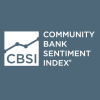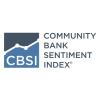Opening Remarks by CSBS Chair Lise Kruse at the 2023 Community Banking Research Conference
Welcome! It is so great to see all of you – I enjoy and appreciate that we are able to be here in person. Thank you, St. Louis Federal Reserve, for again hosting this event.
This conference presented by state and federal regulators is a testament to our nation’s dual-banking system - which I believe helps make our economy the greatest in the world. The dual banking system allows for federal and state partnership in supervision. That partnership includes local insight, which is what helps our supervised entities and community banks thrive. All across this nation, in small rural communities to the large urban cities, community banks are showing up, serving their communities, lending to small businesses and making our economy resilient.
This conference is so important for us to tell the story about a very successful part of our financial system, community banking. Having regulators with their supervisory perspective, academia with their research expertise and bankers with real life experience allows us to tell the story in a credible way. It quantifies the stories we all know well with data and research.
But this morning, I want to share from my perspective as a state regulator why it’s important to protect this model of banking. My home state of North Dakota is rural and counts fewer than 800,000 citizens. For comparison, my state is about 500 times larger than Philadelphia in acreage but is home to less than half of the population of Philadelphia.
In my role as the Commissioner of North Dakota’s Department of Financial Institutions, I get a close-up view of the community banks we charter. Today, I want to share what I usually don’t get to tell – or even really focus on in my day-to-day work. I want to tell you what I see beyond a bank’s condition and its Community Reinvestment Act efforts. I want to share the stories about community banking that show its impact in improving and growing our communities.
Community banks often help to ensure the community has basic amenities that others might take for granted. Sometimes the day-care centers and hospitals in the most rural parts of North Dakota only exist because the local bank made a decision to invest in them for the benefit of the community. Or they might contribute to the construction of their local high school sports venue.
Sometimes their involvement is not so obvious. A community banker I know visited his local gas station when its owner was called away. The banker took over and manned the gas pump. Another helped an older man who wanted to get a fishing license but didn’t have the required credit card to pay. The banker used his own credit card for the license. His customer paid him back and was able to go fishing.
I know of a couple of banks that encourage their staff to contribute to be a part of their giving community. While Bell Bank is now a large community bank, they have made a big local impact for years. In 2007 the bank started a “pay-it-forward” initiative. Every full-time employee of Bell Bank receives $1,000, and every part-time employee receives $500 to give as they choose to individuals, families and organizations in need. Employees give to the charity of their choice, for example a next-door neighbor who is battling cancer. That means that in every community with a Bell Bank employee, money is distributed to people who need it. To date, Bell Bank employees have distributed $27 million and impacted tens of thousands of lives.
We will hear tomorrow from First Western Bank & Trust President and CEO Brenda Foster on the assessing credit risk panel, but I want to tell you what her bank is doing locally to help the community. The bank is located in Minot, North Dakota. Every Christmas, it holds a random-acts-of-kindness program called “100 Cheers.” This year the bank will dedicate 100 hours of service and donate more than 700 meals to address food insecurity. A few years back, Minot was impacted by a devastating flood. The bank was there – helping the community through a crisis.
Talking about helping a community through a crisis - I also want to call out a banker who is not located in my state but the great state of Mississippi. The President and CEO from the Bank of Anguilla Andy Anderson is here and will share tomorrow how his community was wiped out by a tornado this spring. His bank was one of the few remaining structures left. The Bank of Anguilla has become the center of recovery efforts and is now in the challenging time of rebuilding the town. I think Andy is the very portrait of a community banker – one who cares and supports his community. Thank you, Andy, for being here – and showing us what being a community banker really means.
These community banks show up. They know their community. And it is up to all of us to share their stories. In a society so divided, we need reminders of what it means to be a community. A community together for one purpose, where differences can be put aside. Where we focus on the things that bring us together and move us forward. I believe that this conference is just that. Where we get to learn more about the various aspects of community banking.
As regulators, we have an important role. We have to think about how our policies impact these banks. Are we issuing more red tape instead of working with what is in place? Increasing a community bank’s paper burden does nothing for safety and soundness. But it does add to a community bank’s challenges. I think we especially have to consider this as we respond to the regional bank closures from earlier this year. We have to ensure tailored supervision. There is no one-size fits all. What works for a $500 billion bank in the big city, is not going to work for a $30 million community bank on the prairie.
We also must be transparent. Tomorrow we are going to hear a lot about how community banks are planning for the future. They need to know the parameters we set around regulations and policy to be successful.
So, over the next two days of this conference, I ask you all to listen. Listen to the stories. Look at the data and research. And think about how we can use this information going forward. Let’s all think about how we can ensure community banks can continue to thrive far into the future.
- Press Releases
Community Banks Need Tailored Rules to Thrive
Feb 5, 2025
- Blog post
Why Are Community Bankers More Optimistic?
Jan 21, 2025
- Press Releases
Community Banker Optimism Surges at End of Year
Jan 7, 2025
Get Updates
Subscribe to CSBS
Stay up to date with the CSBS newsletter
News to your ears,
New every month.CSBS Podcasts


